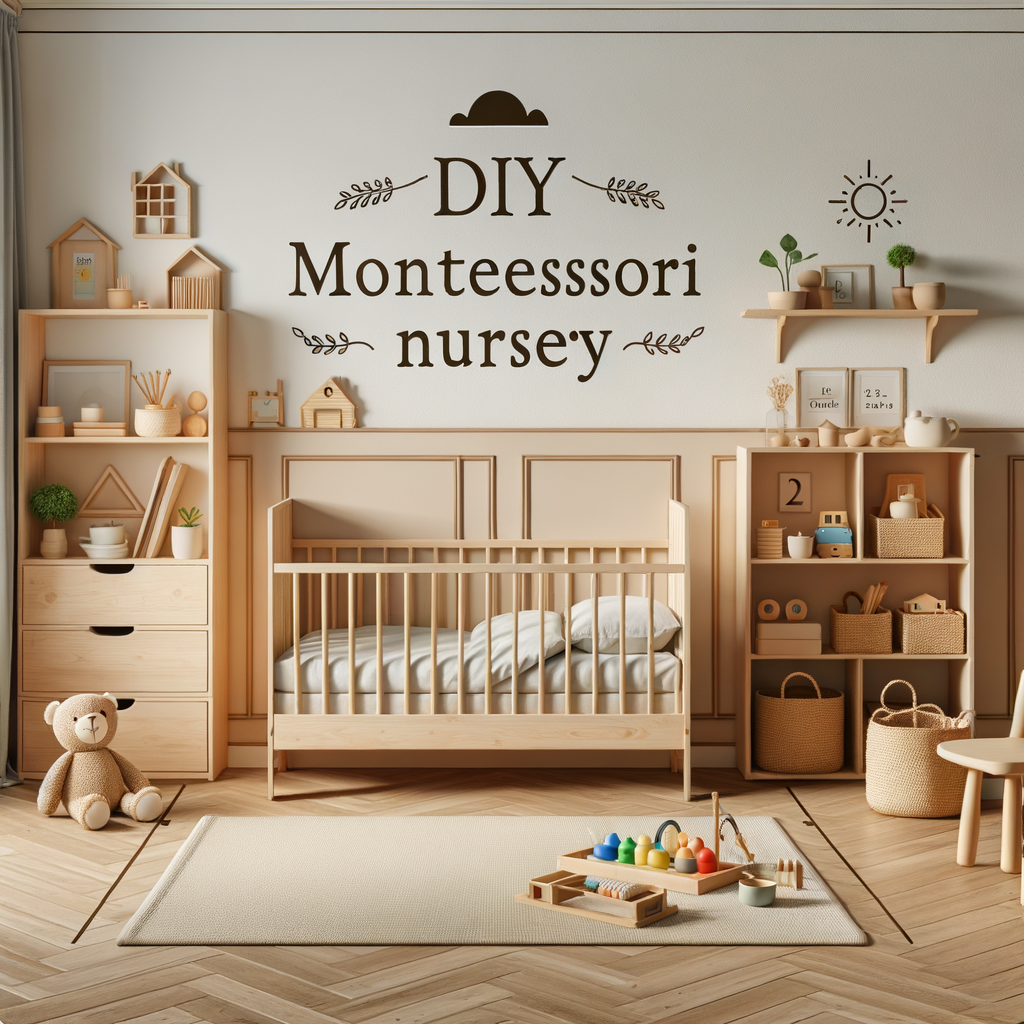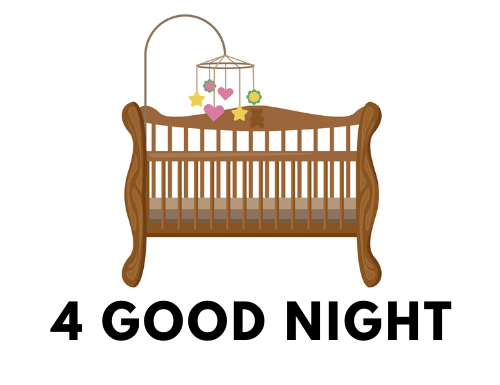
Introduction to Montessori Nursery Design
Welcome to our comprehensive guide on Montessori Nursery Design. If you’re a parent seeking a unique, child-centered approach to your little one’s space, you’ve come to the right place. Let’s dive in and explore the world of Montessori nurseries.
- Understanding the Montessori principles in nursery design
- Benefits of a Montessori-inspired nursery
- Encourages Independence: By making everything accessible and at the child’s level, a Montessori nursery encourages independence and self-confidence from an early age.
- Promotes Learning: The carefully chosen toys and materials in a Montessori nursery promote active learning and exploration.
- Safe Environment: Safety is a top priority in Montessori nurseries. Everything is child-proofed, and the floor bed eliminates the risk of a child falling from a height.
- Long-lasting Design: Unlike traditional nurseries that need to be updated as the child grows, a Montessori nursery is designed to evolve with your child, making it a cost-effective choice in the long run.
The Montessori method, developed by Dr. Maria Montessori, is a child-centered educational approach based on scientific observations of children. When it comes to nursery design, this approach emphasizes creating an environment that fosters independence, freedom within limits, and respect for a child’s natural psychological, physical, and social development.
Key elements of a Montessori nursery include low shelves with toys and materials accessible to the child, a floor bed instead of a traditional crib, and a mirror installed at the child’s level. The goal is to create a safe, engaging environment where your child can explore and learn at their own pace.
A Montessori-inspired nursery offers numerous benefits for both children and parents. Here are a few key advantages:
Stay tuned as we delve deeper into setting up a Montessori nursery, share inspiring nursery ideas, and offer practical decor tips in the upcoming sections.
Setting up a Montessori Nursery
Creating a Montessori nursery is a rewarding journey that allows you to design a space that fosters your child’s independence and love for learning. Let’s delve into the first step: planning your space.
Planning Your Space
Before you start purchasing furniture or deciding on decor, it’s essential to plan your space carefully. This involves choosing the right room for your nursery and considering the room’s natural light and ventilation.
- Choosing the right room for your Montessori nursery
- Considering the room’s natural light and ventilation
The room you choose for your Montessori nursery plays a significant role in your child’s comfort and safety. It should be a quiet place, away from the busiest parts of the house, to minimize disturbances during nap times. The room should also be spacious enough to accommodate different learning areas and allow your child to move freely.
Natural light is crucial in a Montessori nursery. It helps regulate your child’s body clock and promotes a healthy sleep-wake cycle. Choose a room with large windows that allow plenty of sunlight during the day. Ventilation is equally important. A well-ventilated room ensures fresh air circulation, which is beneficial for your child’s health and wellbeing.
Remember, setting up a Montessori nursery is not about creating a picture-perfect room, but a functional, child-centered space that encourages exploration and independence. The right room with ample natural light and good ventilation is a great starting point.
Choosing Montessori Furniture
When setting up a Montessori nursery, the furniture you choose plays a vital role in creating an environment that promotes independence and learning. Here are some key pieces of furniture to consider:
- Importance of Low Shelves in a Montessori Nursery
- Choosing a Child-Sized Bed
- Creating a Montessori-Style Changing Area
Low shelves are a hallmark of Montessori nurseries. They are designed to be easily accessible to children, encouraging them to explore and choose their own activities. This fosters a sense of independence and self-confidence. For example, a study conducted by the American Montessori Society found that children in Montessori settings showed higher levels of self-directed learning than those in traditional classrooms.
Another important piece of furniture in a Montessori nursery is a child-sized bed. Instead of traditional cribs, Montessori nurseries often use floor beds. This allows children to move freely in and out of bed, promoting independence and physical development. It’s important to ensure the bed is safe and comfortable for your child. It should be low to the ground, with a firm mattress and no sharp edges.
A Montessori-style changing area is designed to promote independence and respect for the child. Instead of a high changing table, consider using a low table or a mat on the floor. This allows the child to participate in the process as much as possible. The changing area should also be organized and clean, with everything you need within reach. This not only makes the process easier for you, but also provides a sense of order and routine for the child.
In conclusion, choosing the right Montessori furniture is about creating a space that is safe, accessible, and respectful to the child. It’s about fostering independence and a love of learning from a young age.
Montessori-Inspired Nursery Ideas
Creating a Montessori-inspired nursery is a wonderful way to foster your child’s independence and love for learning from a young age. Here are some ideas to help you create a Montessori baby room that is both functional and aesthetically pleasing.
Montessori Baby Room Ideas
Designing a Montessori baby room involves creating an environment that is safe, stimulating, and child-centered. Here are three key ideas to consider:
- Creating a sensory wall
- Setting up a reading corner
- Integrating nature with plants and natural materials
A sensory wall is a fantastic addition to a Montessori nursery. It encourages your baby to explore different textures, shapes, and colors, stimulating their senses and promoting cognitive development. You can create a sensory wall using a variety of materials such as fabric swatches, textured wallpapers, and interactive toys.
Reading is a vital part of a child’s development. Setting up a cozy reading corner with a selection of age-appropriate books can foster a love for reading from an early age. Ensure the books are easily accessible to your child, and consider adding soft seating for comfort.
Bringing nature into your child’s nursery can have numerous benefits. Plants can improve air quality and provide a calming environment. Using natural materials such as wood and cotton can also create a warm and inviting space. However, always ensure that any plants or materials used are safe and non-toxic for your child.
Remember, the goal of a Montessori-inspired nursery is to create a space that encourages your child’s natural curiosity and desire to learn. By incorporating these ideas into your nursery design, you can create a stimulating and nurturing environment for your child.
DIY Montessori Nursery
Creating a Montessori-inspired nursery doesn’t have to be expensive or complicated. With a little creativity and some basic tools, you can create a stimulating and educational environment for your child. Let’s explore some DIY ideas for your Montessori nursery.
-
Creating Homemade Montessori Toys
Montessori toys are designed to encourage independent learning and exploration. They are often simple in design, focusing on a single concept or skill. Here are a few ideas for homemade Montessori toys:
- Texture Boards: Gather different materials such as fabric, sandpaper, and bubble wrap. Glue each material onto a separate piece of cardboard to create a set of texture boards.
- Color Sorting Game: Collect small objects of different colors. Paint egg cartons in corresponding colors. The child’s task is to sort the objects into the matching compartments.
- Number Rods: Cut wooden dowels into different lengths. Paint each rod a different color and label them with numbers. This toy helps children understand the concept of numbers and lengths.
Remember, the goal of Montessori toys is to stimulate learning, not to entertain. So, keep the design simple and focus on the educational value.
-
Building Your Own Low Shelves
Low shelves are a staple in Montessori nurseries. They allow children to access their toys and materials independently, promoting autonomy and decision-making skills. Here’s a simple guide to building your own low shelves:
- Materials: You will need a sheet of plywood, four small legs, screws, and paint or varnish.
- Cutting: Cut the plywood into three pieces: one for the top and two for the sides. The height should be low enough for your child to reach the top shelf.
- Assembly: Attach the sides to the top using screws. Make sure the structure is sturdy. Attach the legs at the bottom.
- Finishing: Sand the edges to make them smooth. Paint or varnish the shelves to match your nursery decor.
Building your own low shelves can be a rewarding project. Not only will you create a functional piece of furniture, but you’ll also contribute to your child’s learning environment.
In conclusion, creating a DIY Montessori nursery is a fun and rewarding project. It allows you to tailor the environment to your child’s needs and interests, while also saving money. So, why not give it a try?
Montessori Nursery Decor Tips
Decorating a Montessori nursery requires a thoughtful approach. The goal is to create a space that is calming, stimulating, and purposeful. Here are some tips to help you achieve this:
- Choosing calming, neutral colors
- Using texture for sensory stimulation
- Keeping decor minimal and purposeful
Color plays a significant role in setting the mood of a room. For a Montessori nursery, it’s best to choose calming, neutral colors. These colors create a peaceful environment that’s conducive to learning and exploration. For instance, shades of white, beige, or pastel colors can make the room feel calm and inviting. Remember, the nursery is a place for your child to relax and sleep, so avoid bright, overstimulating colors.
Montessori principles emphasize the importance of sensory experiences in child development. Incorporating different textures in the nursery decor can provide these sensory stimulations. You can use rugs with different textures, fabric wall hangings, or textured toys. However, ensure that all materials are safe for your child to touch and explore.
In a Montessori nursery, less is more. The decor should be minimal and purposeful. Avoid overcrowding the room with unnecessary items. Each piece of decor should serve a purpose, whether it’s a toy for learning or a piece of art for aesthetic appeal. This approach not only keeps the room tidy but also makes it easier for your child to focus on their activities.
Remember, the goal of a Montessori nursery is to foster independence and encourage exploration. The decor should support these goals, not distract from them. With these tips, you can create a nurturing and stimulating environment for your child.
Case Studies: Real Montessori Nurseries
In this section, we will delve into real-life examples of Montessori nurseries. Our first case study focuses on an urban Montessori nursery.
Case Study 1: Urban Montessori Nursery
Let’s explore a Montessori nursery located in the heart of a bustling city. Despite the urban setting, this nursery successfully incorporates key Montessori principles into its design.
- Overview of the nursery design
The urban Montessori nursery is a haven of tranquility amidst the city chaos. The design is centered around creating a calm, inviting, and stimulating environment for the children. The nursery is divided into several areas, each dedicated to a particular learning activity. Natural light floods the space, and indoor plants are scattered throughout, bringing a touch of nature into the urban setting.
- Key Montessori elements used
This nursery has skillfully integrated several key Montessori elements into its design. Here are a few:
- Child-sized furniture: All furniture in the nursery is child-sized, encouraging independence and self-reliance.
- Open shelves: Materials are displayed on open shelves, easily accessible to the children. This promotes freedom of choice and fosters decision-making skills.
- Practical life activities: The nursery has a dedicated area for practical life activities, such as pouring, spooning, and buttoning, which are essential for developing fine motor skills and concentration.
- Nature-inspired elements: Despite being in an urban setting, the nursery incorporates natural elements like plants and wooden materials, fostering a connection with nature.
Through thoughtful design and careful selection of materials, this urban Montessori nursery successfully creates a nurturing and stimulating environment that embodies Montessori principles.
Case Study 2: Rural Montessori Nursery
Let’s take a closer look at a real-life example of a Montessori nursery in a rural setting. This nursery beautifully incorporates the principles of the Montessori method into its design and operation.
- Overview of the nursery design
- Key Montessori elements used
- Child-centered environment: The nursery is designed with the child’s needs and interests in mind. The furniture is child-sized, and the materials are placed on low shelves that are easily accessible to the children.
- Hands-on learning: The nursery provides a variety of Montessori materials that promote hands-on learning. These materials are designed to be self-correcting, allowing the children to learn from their mistakes and develop problem-solving skills.
- Freedom within limits: While the children are given the freedom to choose their activities, there are clear boundaries and rules in place to ensure a safe and respectful environment.
- Respect for nature: The nursery makes full use of its rural setting by incorporating outdoor activities and nature-based learning into its curriculum. The children are encouraged to explore the natural environment, learn about plants and animals, and develop a respect for nature.
This rural Montessori nursery is set in a spacious, natural environment. The design of the nursery is simple yet functional, with a focus on creating a calm and inviting space for children. The nursery is divided into different areas for various activities, such as reading, art, and practical life skills. Each area is clearly defined and easily accessible to the children.
The furniture in the nursery is child-sized, allowing the children to move freely and independently. Natural materials are used extensively in the nursery, from wooden furniture to cotton rugs, creating a warm and homely atmosphere. The walls are adorned with children’s artwork and educational materials at the child’s eye level, promoting a sense of ownership and belonging among the children.
The rural Montessori nursery incorporates several key Montessori elements into its design and operation. These include:
In conclusion, this rural Montessori nursery is a shining example of how the Montessori method can be effectively implemented in a nursery setting. It provides a nurturing and stimulating environment where children can learn and grow at their own pace, fostering their love for learning and respect for nature.
Conclusion: Your Montessori Nursery Setup Guide
As we wrap up this comprehensive guide, let’s revisit the essential points and tips that will help you create a nurturing and inspiring Montessori nursery for your child.
- Recap of key points for designing a Montessori nursery
- Low shelves with toys and materials that are easily accessible to the child.
- A floor bed instead of a traditional crib to promote mobility and independence.
- Natural materials and neutral colors to create a calm and peaceful environment.
- A child-sized table and chairs to encourage self-reliance and practical life skills.
- Artwork and mirrors placed at the child’s eye level to foster self-awareness and appreciation of beauty.
- Final tips for creating a nurturing, Montessori-inspired space
- Keep it simple: A Montessori nursery should be uncluttered and well-organized to avoid overwhelming the child.
- Rotate toys: Regularly changing the toys and materials on the shelves will keep your child’s interest and encourage exploration.
- Follow your child’s interests: Observe your child and adjust the environment to meet their changing needs and interests.
- Be patient: Remember, the goal is not perfection but to create a nurturing and stimulating environment that supports your child’s development.
Designing a Montessori nursery revolves around the principles of independence, freedom within limits, and respect for a child’s natural psychological, physical, and social development. Key elements include:
As you embark on this exciting journey, here are some final tips to keep in mind:
In conclusion, setting up a Montessori nursery is a rewarding process that requires careful planning and thoughtful consideration. By adhering to the Montessori principles and following these tips, you can create a space that nurtures your child’s natural curiosity and love of learning.














